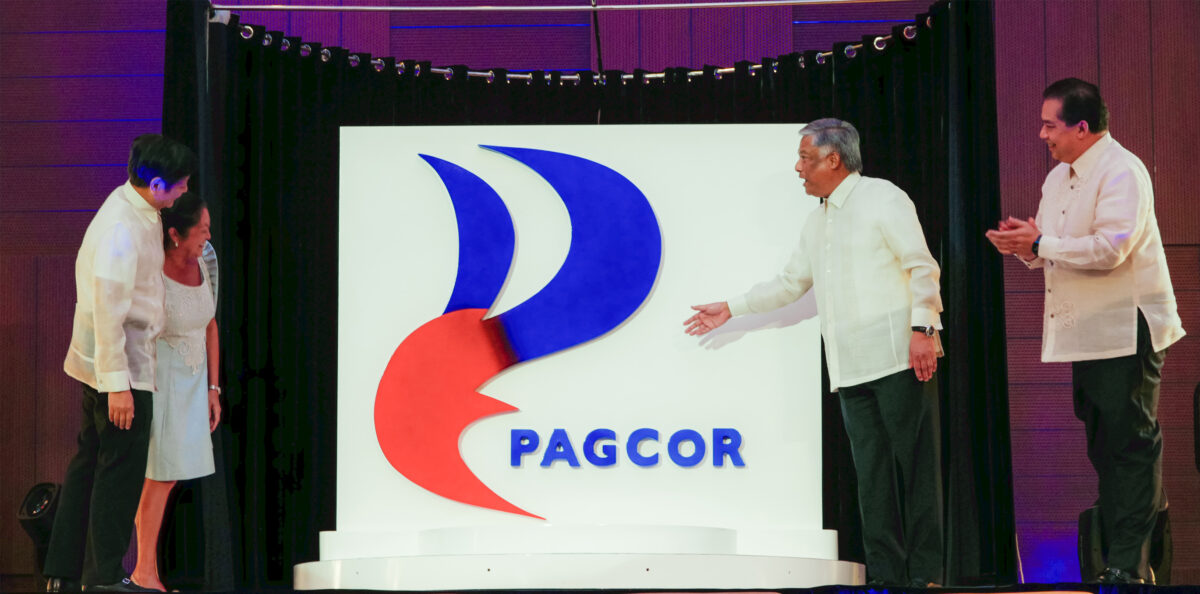
The controversial new logo of the Philippine Amusement and Gaming Corp. (Pagcor) is different from the logo of the Delft University of Technology (TU Delft) in Delft, Netherlands, contrary to a post on Facebook.
In a post on July 13, Facebook user Juan Pedro Deluna said “Copyright image owned by Delft University of Technology, Netherlands…Parang may kahawig na P3M na logo (It seems to look similar to a P3M logo),” alluding to the amount of professional fee paid to the designer of the Pagcor logo.
Deluna said he came across the supposed imitation of TU Delft’s logo through a “visual image search.”
Commenting on his post, at least two netizens, former journalist Allan Afdal Nawal and a certain Ryan Case Arevalo, pointed out to him that the two logos look different. Deluna, however, insisted on the reliability of his finding.
Deluna, who calls himself a digital creator, has 5,600 followers. But aside from his gender and birthday (Dec. 15, 1975), his profile showed no photos of him and other personal details as of Thursday (July 13).
TU Delft’s logo uses the colors black, cyan, and white, with the letter “T” bearing a stylized shape of a flame on top. According to the university website, “The flame is a central feature in TU Delft’s logo: it is the flame of Prometheus. In Greek mythology, Prometheus stole fire from Zeus and gave it to humanity. Fire enabled humans to create many of the things they needed to survive…”
“A fitting figurehead for TU Delft. Prometheus’ flame in our logo therefore symbolizes knowledge, innovation and creativity. But his name is also symbolic: Prometheus means ‘he who looks ahead’. He was constantly trying to help humanity move forward. That is essentially what we do at TU Delft too: creating impact for a better society,” it adds.
Here’s a link to TU Delft logo.

Pagcor’s logo bears resemblance to a flame using the colors blue and red. Pagcor chair and CEO Alejandro Tengson said the new logo “incorporates the element of fire associated with energy, inspiration, passion, and transformation. It symbolizes the flame that ignites change and drives progress.”

Pagcor unveiled its new logo in time for its 40th anniversary. However, its design drew criticisms from the public, and elicited memes and jokes on social media. Critics said it isn’t worth the P3-million professional fee paid to the designer identified as Francisco “Dopy” Doplon.
Pagcor commissioned Doplon, proprietor of Printplus Graphic Services, according to the notice of award posted on its website dated June 27.
Doplon designed the Cultural Center of the Philippines 40th Anniversary Logo, Metrobank Foundation and All Day Supermarket logos, to name some.
In 2011, the artist won the logo-making contest of the University of Santo Tomas. He called his logo design for UST “Tongues of Fire,” which shows four flames symbolizing the 400 years of existence of the university, the oldest in the country.
“A recipient of Six National Book Awards, among his notable works are the award-winning Jaime Zobel book series, the Philippine Pavilion Digital Art murals at the 2000 Hannover World Expo in Germany, the Ayala Group of Companies unified annual reports, Philippine Airlines’ Mabuhay Inflight magazine, the corporate look of the Cultural Center of the Philippines, the 400 Years ‘Tongues of Fire’ Logo and Quadricentennial Graphic system of the University of Santo Tomas and recently the Hewlett-Packard Digital print award at the 2012 Druppa Print Media Fair in Germany,” according to his profile on LinkedIn.
Also according to his Linkedin profile, Doplon is the creative director of Art One Design.
Printplus Graphic Services has deactivated its Facebook page. The website of Art One Design has been shut down too. A visit to the site on July 14 showed the tag “This domain name may be available for registration.”
Doplon had not issued any statement to the media as of July 14.
As with all our other reports, MindaNews welcomes leads or suggestions from the public to potential fact-check stories. (H. Marcos C. Mordeno / MindaNews)
The post FACT CHECK: New PAGCOR logo is different from Delft University of Technology’s appeared first on MindaNews.
0 Comments